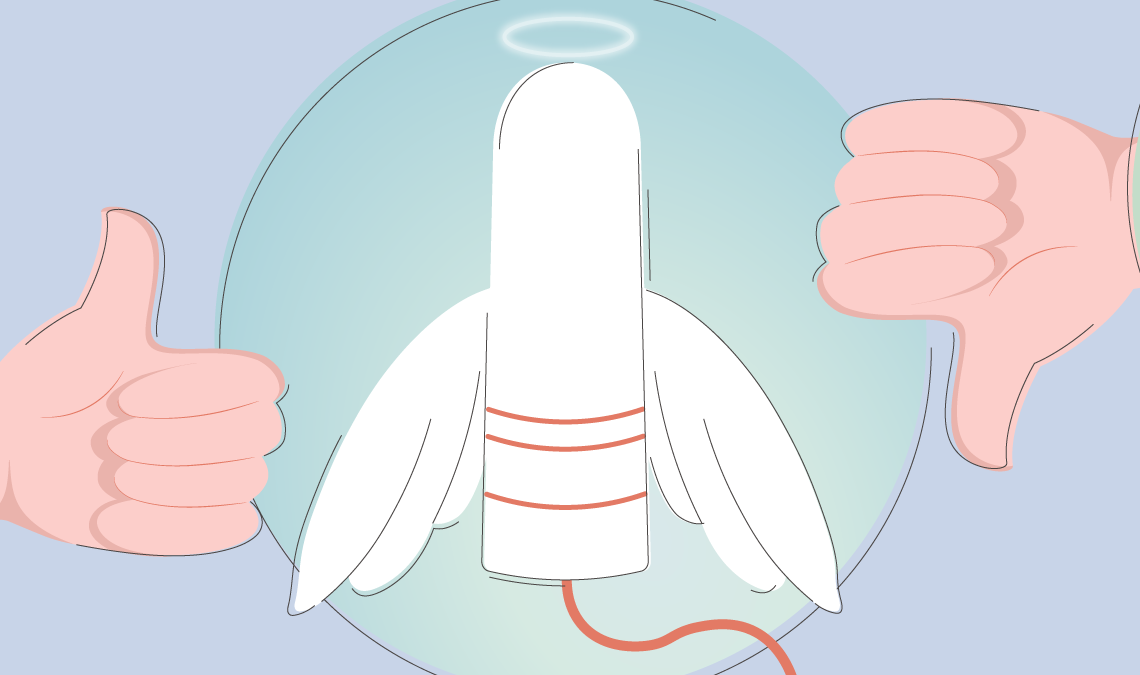Tampons can be a total game-changer for your period. Let’s be real: they offer a level of freedom that a pad just can’t compete with.
But whether you’re new to the world of menstrual tampons, or if you’ve been using them for years, there’s a lot to learn about getting it right, and it’s always worth brushing up on how to use tampons safely and comfortably. No one wants to talk about it, but there’s also a lot that can go wrong. So, let’s break it down — here are the do’s and don’ts of using tampons for beginners!
When You Use a Tampon, Do:
Do: Choose the Right Absorbency
Tampons come in different absorbency levels for a reason. Always match your tampon to your flow— regular, super, or super plus. Using the right size helps prevent leaks, keeping you stress-free during your day.
However, using the wrong size can be messy at best and painful at worst. Research shows that higher absorbency tampons are associated with an increased risk of Toxic Shock Syndrome—a rare but serious condition. Plus, using a high-absorbency menstrual tampon when your flow is light can dry you out, and removing a dry tampon is not fun. *Ouch*.
Do: Relax When Inserting
Insertion is a skill, and like any skill, it takes practice. If it’s your first time using a tampon, give yourself time to get it right. The key to figuring out how to use a tampon for the first time: Relaxing (seriously, muscle tension makes it harder), and trying different positions—e.g. sitting on the toilet, standing with one leg up, whatever feels easiest.
Once the tampon is in, you shouldn’t feel it at all. If it’s uncomfortable, it might not be far enough in. Checking out our tampon insertion guide can help you get the technique right.
Do: Change It Every 4-8 Hours (Or Especially After a Poo)
Never, ever leave a tampon in for longer than 8 hours. Doing so increases your risk of Toxic Shock Syndrome. Set an alarm if you’re forgetful, and always swap out your tampon before you hit that 8-hour mark. Pro tip: on heavier days, consider changing your tampon every 4-6 hours to avoid leaking and potential health risks.
Another, more lesser-known rule of thumb is to change your tampon after a bowel movement. Bacteria-laden faeces can contaminate the string that hangs out of the tampon, exposing you to potential vaginal or urinary tract infections.
Do: Carry Extras
Tampons are like bobby pins—you always need more than you think. Keep a stash in your bag, car, or desk drawer because nothing’s worse than realizing you’re out when your period arrives unannounced. Having extras also lets you help a friend in need—period solidarity is a thing.
Do: Listen to Your Body
Your body knows best. If you’re feeling discomfort or pain when using a tampon, it’s a sign to stop and reassess. Sometimes switching to a smaller size or a different brand with softer materials can make a world of difference. Paying attention to your body’s signals can prevent irritation and long-term health issues. A tampon insertion guide can also help you adjust and ensure you’re doing it correctly.
When You Use a Tampon, Don’t:
Don’t: Double Up
Never use more than one tampon at a time, even if your flow is heavy. If you need more protection, consider pairing a tampon with a liner or switching to a super or ultra-absorbent tampon.
Inserting a second tampon may push the first one deeper into the vaginal canal, making it challenging to remove and increasing the risk of forgetting about it. This can lead to a retained tampon, which may cause symptoms like unusual discharge, odor, and, in severe cases, infections such as bacterial vaginosis, or even microtears in the vaginal walls. Yikes!
Don’t: Force It
If you’re finding tampon insertion uncomfortable or painful, stop and reassess. Maybe your flow isn’t heavy enough yet, or you need a smaller size. Forcing a tampon in can cause microtears, which no one wants (see above).
Using the best tampons for beginners can make the process smoother. Tampon use should feel effortless—don’t settle for less.
Don’t: Flush them!
Wrap used tampons in tissue or their wrapper, and toss them in the trash. Flushing them can clog pipes and is terrible for the environment. Tampons are convenient; don’t let them ruin your plumbing karma. It’s a simple habit that makes a big difference.
Don’t: Use a Tampon for Discharge or Spotting
Tampons are made for period blood, not everyday vaginal discharge or spotting. Inserting a menstrual tampon when you’re not on your period can dry out your vagina and throw off your pH balance. If you’re spotting, opt for a panty liner instead.
Don’t: Ignore Unusual Symptoms
If you notice unusual smells, irritation, or fever after using a tampon, remove it immediately and call your doctor. Sometimes it’s nothing, but it’s always better to be safe. Your health is worth the extra attention.
Left a tampon in for longer than 8 hours? Remove it ASAP. If it’s been days (yes, it happens), don’t panic—but definitely see a doctor. The health risks of tampons that are forgotten include infections or worse. This is why setting reminders or using a backup method can be a lifesaver.
Wrapping It Up
Tampons are like the ultimate sidekick for your period—but only if you’re using them right. They aren’t just about convenience; they’re about empowering you to live your life, period included. If you’re just getting started, researching the best tampons for beginners and reading a tampon insertion guide can make all the difference in your experience.Plus, if you keep these do’s and don’ts in mind, and you’ll be a pro in no time.
Remember, whether you’re Team Tampon, Team Pad, or a mix of both, the goal is to find what works for you. Your period, your rules.
Still have questions about proper tampon use? Shoot your Qs in the comments and we will reply with As!



